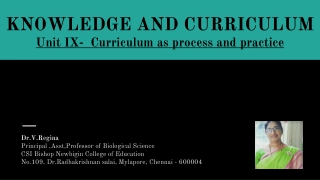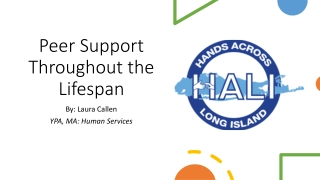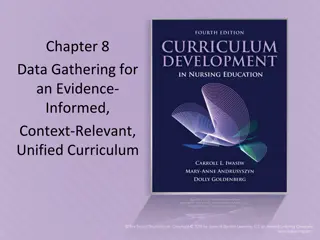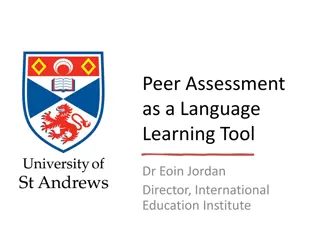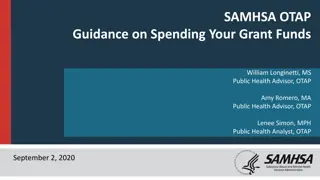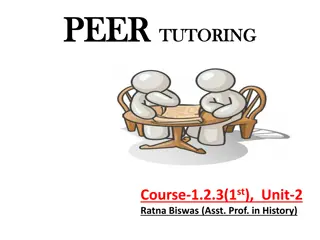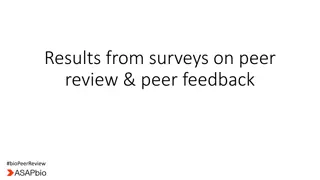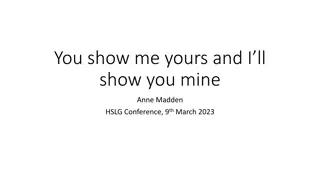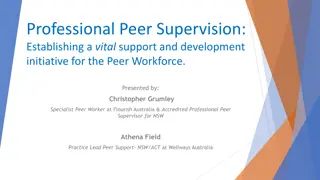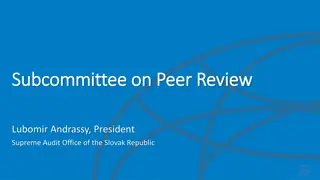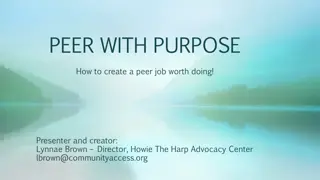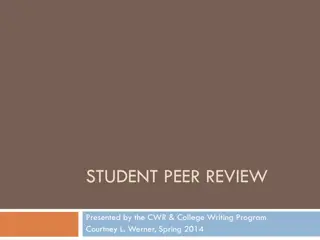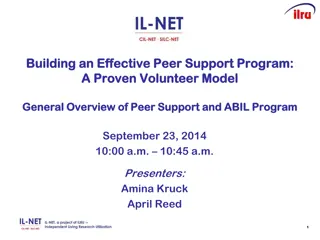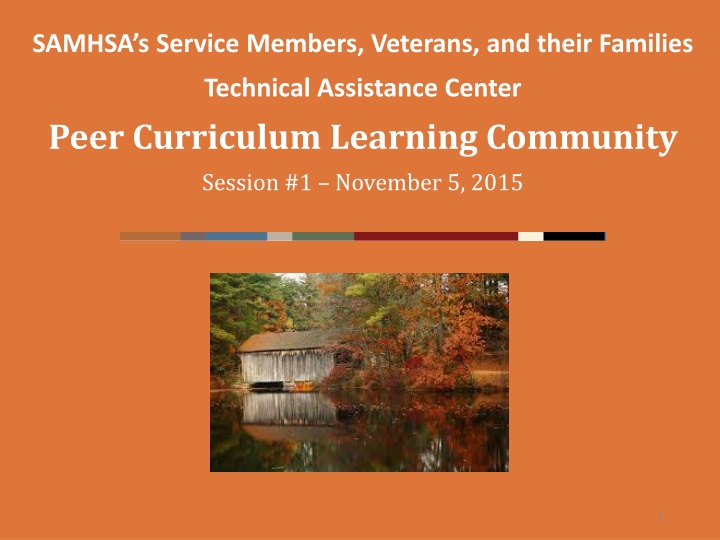
Learning Community Session on SMVF Peer Support Training
"Join the SAMHSA's Service Members, Veterans, and their Families Technical Assistance Center for a Learning Community Session focused on SMVF Peer Support training. Gain insights on core competencies, tools, and resources for enhancing training in military culture, suicide prevention, and substance use disorders. Engage in discussions and identify best practices for aligning training with organizational goals. Don't miss out on valuable tips and resources to support participants and facilitators in the training process."
Download Presentation

Please find below an Image/Link to download the presentation.
The content on the website is provided AS IS for your information and personal use only. It may not be sold, licensed, or shared on other websites without obtaining consent from the author. If you encounter any issues during the download, it is possible that the publisher has removed the file from their server.
You are allowed to download the files provided on this website for personal or commercial use, subject to the condition that they are used lawfully. All files are the property of their respective owners.
The content on the website is provided AS IS for your information and personal use only. It may not be sold, licensed, or shared on other websites without obtaining consent from the author.
E N D
Presentation Transcript
SAMHSAs Service Members, Veterans, and their Families Technical Assistance Center Peer Curriculum Learning Community Session #1 November 5, 2015 1
While were waiting Please tell us: Have you taken part in any of our other SMVF TA Center Learning Communities? Type your answer in the chat box to right. 2
Welcome SMVF Peer Support: The Science, Support Services, and State- Specific Resources for Training, Credentialing, and Reimbursement Michelle Cleary Senior Project Associate, Session Facilitator Sarah Degnan Project Assistant, Session Administrator 3
Housekeeping Please identify yourself each time you speak This is Please mute your phones when not speaking Highly Interactive Respectful environment 4
Participant Introductions States/Territories Names Washington Morgan Keys Washington Vincent Collins Washington James Rose Texas Suzanna Hupp Texas Perry Jeffries Texas Bettie Peebles Beckworth Maryland John Keller Name Maryland Shauna Donahue State/Territory Maryland Jason Peer Agency Maryland Michelle Darling Role North Dakota Joe Faller Massachusetts Benjamin Cluff 5
Donna Aligata, R.N.C. Project Director SAMHSA s SMVF Technical Assistance (TA) Center Policy Research Associates, Inc.
Objectives Gain knowledge about the core competencies of existing peer trainings Discuss what tools other states are using to train SMVF peers Identify state, federal, and private products available to enhance training of SMVF peers in military culture, suicide prevention, and SUDS Gain a strong understanding of the training needs analysis process to ensure training curriculum and deliveries align with roles and organizational goals Collect tips for creating participant and facilitator guides, visuals, and training resources and support materials 7
Todays Agenda Looking Across States: Workforce Development Priorities Round Robin Considerations When Selecting Training Curricula Round Robin Wrap Up 8
Poll Question Is your state considering or already adapting training or curriculum to include the topic of SMVF? 9
Looking Across States: Workforce Development Priorities Donna Aligata, R.N.C. Project Director SAMHSA s SMVF Technical Assistance (TA) Center Policy Research Associates, Inc.
Critical Questions Have you done a gap analysis or a training inventory? What are the strengths of current training? How have you identified and addressed the knowledge and skill gaps? Have you leveraged existing training and workforce development activities to better respond to this population? Are you optimizing and drawing from existing training resources?
Increasing the focus on this SMVF Population Common Key Area: Peer Support State Examples/Activities Integrating military culture and increasing access to SMVF community recovery support supports into their CCAR recovery coach curriculum using ATR vouchers Washington Sending SMVF SAVE veterans for CCAR Recovery Coach training and credentialing and integrating military culture into coach training Massachusetts Training peers in multiple domains California
Increasing the focus on this SMVF Population (cont d) Common Key Area: Suicide Prevention State Examples/Activities integrating SUDS and SP into their operation immersion and military culture curriculum and is requiring SP and military culture for provider licensing Kentucky requiring SMVF SP for licensing Washington integrating military culture and SMVF SUDS Kansas
Increasing the focus on this SMVF Population (cont d) Common Key Area: SUDS/Recovery State Examples/Activities integrating SUDS and military culture into their provider and peer training Illinois integrating SUDS training content into their navigators training Arizona
Tips Apply adult learning theory: Interactive learning Collaborate with others if you do not have expertise or credibility Instructional Design Basics: Ratio of training design and delivery time (raising awareness, verses changing behavior and skills) Use of learning technologies, visuals, story telling and virtual webcasts
Group Discussion As you think about adapting curriculum in your state which if the following are you considering? 1) Designing your own curriculum 2) Adapting an existing training to include SMVF specific information 3) Cross training 16
Considerations When Selecting Training Curricula
Some Considerations When Selecting Training Curricula Design or redesign? Understanding the importance of effective learning objectives Understanding adult learning theory Understanding the pros and cons of different training methodologies Challenges in redesigning Challenges in designing your own curriculum
Design or Redesign? First question - what are the skill and learning needs of the trainees? Have they or have they not lived experience in military culture and or addiction and other mental/health challenges? Have they or have they not had any experience with coaching? Are the expectations of the coaching service clearly defined and in line with the capabilities of those selected to be coaches?
Design or Redesign? The second question is about resources that presently exist. Do you clearly understand what learning objectives are needed and are these clearly articulated in the curricula you are considering? Take an inventory of how many of your learning objectives are met and which are missing? Balance what it would take to redesign existing curricula (or use multiple existing curricula) versus creating your own.
The Importance of Learning Objectives Learning objectives should be simply stated and measurable. Use action verbs such as to compare, to list, to relate, to demonstrate. Verbs such as to understand or to know are not helpful.
The Importance of Learning Objectives A common mistake with curriculum design is too many learning objectives. If knowledge acquisition is the goal, then 3-5 learning objectives in a day long training is reasonable. If skill acquisition is the goal than 1-2 learning objectives in a day long training is reasonable.
Understanding Adult Learning Theory Adult learners Desire self-directedness Are competency based Make connections to their experience Have differing predominant learning styles Auditory Visual Kinesthetic
Pros and Cons of Different Learning Methodologies Lecture Trainer has control of the environment Retention rate of the material presented is very low (around 10%) Discussion Discussions need to be facilitated so they don t get off track Retention rate is considerable higher as more learning theory aspects are met Experiential Relies on skilled facilitation as participants have more control of the outcome Highest rate of retention
Challenges of Redesign Changes and additions need to be mindful of original learning objectives so that they are still met. If learning objectives are changed than fidelity is compromised and accreditation may be voided. Examples and exercises can be modified as long as learning objectives are still met.
Challenges of Designing New Is somewhat time intensive Design and writing team needs to have expertise in both the material and training design. CEU and other accreditation processes will be needed.
States/Territories Names Washington Morgan Keys Group discussion and Q&A Washington Vincent Collins Washington James Rose Texas Suzanna Hupp Texas Perry Jeffries Texas Bettie Peebles Beckworth Maryland John Keller Maryland Shauna Donahue Maryland Jason Peer Maryland Michelle Darling North Dakota Joe Faller Massachusetts Benjamin Cluff 27
Wrap-up Recap Homework: Training Resource Scavenger Hunt 1. Locate a training resource Peer Support - CCAR Military culture - Community Provider Toolkit, STARR Substance use disorder recovery Suicide prevention - SPRC, SAVE Military Families - NTCSN, MFA 2. Tell us what training resource might be adaptable for your state 28
Wrap-up Next call: o Thursday, November 12, 2015 o Submit your homework by COB November 10, 2015 o Please be sure to register for Session #2 29

